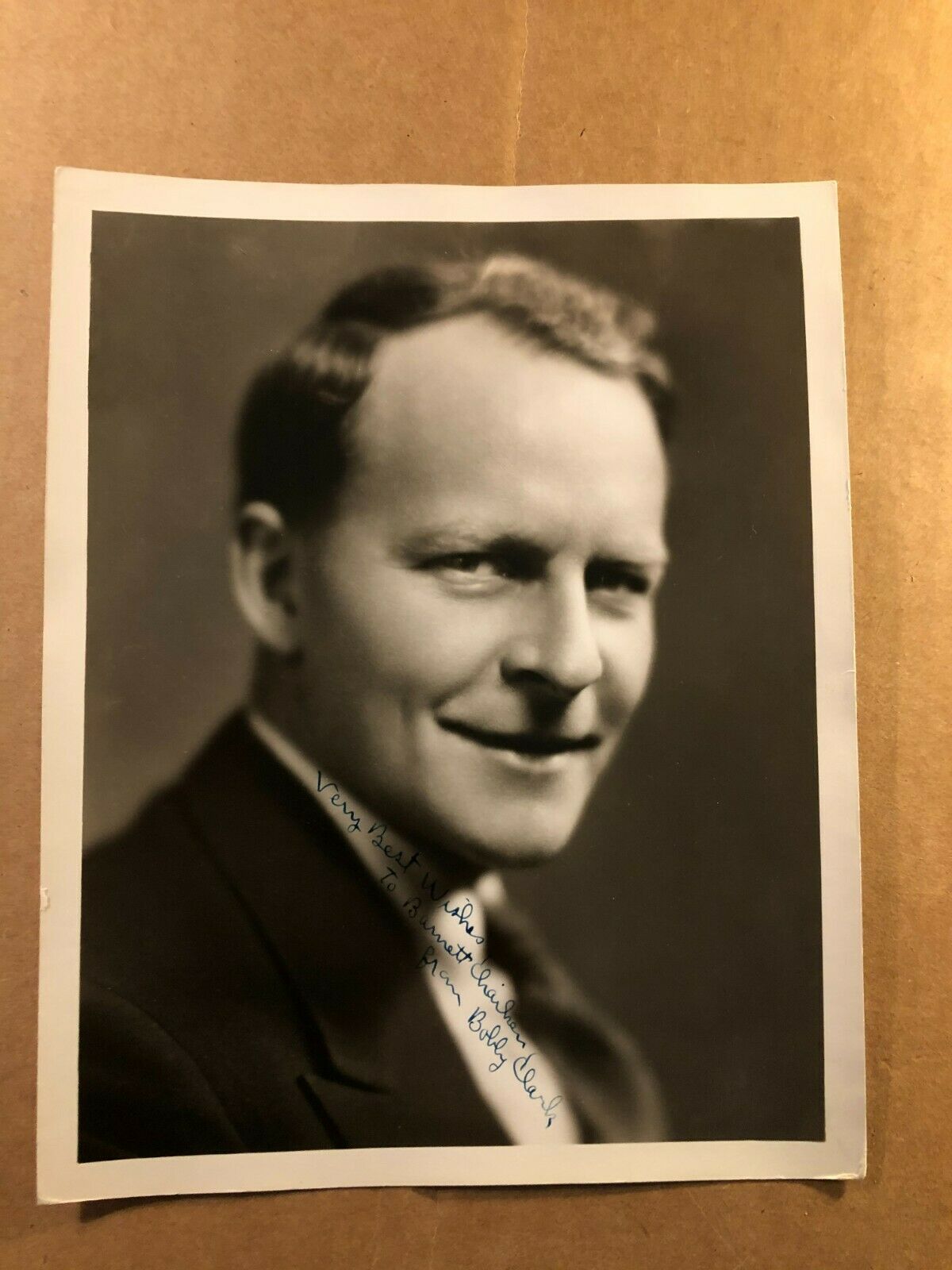-40%
Carson McCullers Extremely Rare Autographed Photo Heart Is Lonely Hunter d. '67
$ 607.19
- Description
- Size Guide
Description
Here is an extremely rare autographed 6" by 7 1/2" photo of one of the greatest American writers of all time, Carson McCullers (1917 – 1967). Was displayed on the walls of the great NYC bookstore Gotham Book Mart, where Carson McCullers gave readings of her work. Inscription reads, "Friendliest wishes." Carson McCullers was an American novelist, short-story writer, playwright, essayist, and poet. Her first novel, The Heart Is a Lonely Hunter (1940), explores the spiritual isolation of misfits and outcasts in a small town of the Southern United States. Her other novels have similar themes and most are set in the deep South.
McCullers' work is often described as Southern Gothic and indicative of her southern roots. Critics also describe her writing and eccentric characters as universal in scope. Her stories have been adapted to stage and film. A stage adaptation of her novel The Member of the Wedding (1946), which captures a young girl's feelings at her brother's wedding, made a successful Broadway run in 1950–51.
McCullers was born Lula Carson Smith in Columbus, Georgia, in 1917 to Lamar Smith, a jeweller, and Marguerite Waters. She was named after her maternal grandmother, Lula Carson Waters. She had a younger brother, Lamar, Jr. and a younger sister, Marguerite. Her mother's grandfather was a planter and Confederate soldier. Her father was a watchmaker and jeweler of French Huguenot descent. From the age of ten she took piano lessons; when she was fifteen her father gave her a typewriter to encourage her story writing.
Smith graduated from Columbus High School. In September 1934, at age 17, she left home on a steamship bound for New York City, planning to study piano at the Juilliard School of Music. After losing the money she was going to use to study at Juilliard on the subway, she decided instead to work, take night classes, and write. She worked several odd jobs, including as a waitress and a dog walker. After falling ill with rheumatic fever she returned to Columbus to recuperate, and she changed her mind about studying music. Returning to New York, she worked in menial jobs while pursuing a writing career; she attended night classes at Columbia University and studied creative writing under Texas writer Dorothy Scarborough and with Sylvia Chatfield Bates at Washington Square College of New York University. In 1936 she published her first work. "Wunderkind", an autobiographical piece that Bates admired, depicted a music prodigy's adolescent insecurity and losses. It first appeared in Story magazine and is collected in The Ballad of the Sad Cafe.
From 1935 to 1937, as her studies and health dictated, she divided her time between Columbus and New York. In September 1937, aged 20, she married an ex-soldier and aspiring writer, Reeves McCullers. A New Yorker profile described her husband as "…a dreamer attracted to big, capable women." They began their married life in Charlotte, North Carolina, where Reeves had found work. The couple made a pact to take alternating turns as writer then breadwinner, starting with Reeves's taking a salaried position while McCullers wrote. Her eventual success as a writer precluded his literary ambitions.
Maxim Lieber was McCullers' literary agent in 1938 and intermittently thereafter. In 1940, at the age of 23, writing in the Southern Gothic or perhaps Southern realist traditions, McCullers completed her first novel, The Heart Is a Lonely Hunter. (The title was suggested by her editor and was taken from a Fiona MacLeod poem, "The Lonely Hunter"). At the time the novel was thought to suggest an anti-Fascist message.
After completing The Heart is a Lonely Hunter in 1939 (then titled The Mute) McCullers and her husband moved to Fayetteville, North Carolina, where she completed Reflections in a Golden Eye (then titled Army Post) in the span of two months. She sold the book to Harper's Bazaar for five hundred dollars in August 1940. It was published in two parts in the magazine in October and November.
With influences such as Isak Dinesen, Dostoyevsky, Chekhov, and Tolstoy she published eight books; the best known are The Heart Is a Lonely Hunter (1940), Reflections in a Golden Eye (1941) and The Member of the Wedding (1946). The novella The Ballad of the Sad Café (1951) depicts loneliness and the pain of unrequited love; at the time of its writing, McCullers was a resident at Yaddo, the artists' colony in Saratoga, New York.
In The Member of the Wedding, McCullers describes the feelings of a young girl at her brother's wedding. The Broadway stage adaptation of the novel had a successful run in 1950–51 and was produced by the Young Vic in London in September 2007. The original production won the New York Drama Critics'Circle Award for the best play of the season.
Many know her works largely by their film adaptations. The Heart Is a Lonely Hunter was adapted as a film with the same title in 1968, with Alan Arkin in the lead role. Reflections in a Golden Eye was directed by John Huston (1967) and starred Marlon Brando and Elizabeth Taylor. Huston, in his autobiography, An Open Book (1980), said:
I first met Carson McCullers during the war when I was visiting Paulette Goddard and Burgess Meredith in upstate New York. Carson lived nearby, and one day when Buzz and I were out for a walk she hailed us from her doorway. She was then in her early 20s, and had already suffered the first of a series of strokes. I remember her as a fragile thing with great shining eyes, and a tremor in her hand as she placed it in mine. It wasn't palsy, rather a quiver of animal timidity. But there was nothing timid or frail about the manner in which Carson McCullers faced life. And as her afflictions multiplied, she only grew stronger."
Richard Wright, the author of Black Boy, reviewed her first novel, published in 1940 at the age of 22, and said she was the first white writer to create fully human black characters. In his review 'Hugo: Secrets of The Inner Landscape,' he stated: "
To me the most impressive aspect of The Heart is a Lonely Hunter is the astonishing humanity that enables a white writer, for the first time in Southern fiction, to handle Negro characters with as much ease and justice as those of her own race. This cannot be accounted for stylistically or politically; it seems to stem from an attitude toward life which enables Miss McCullers to rise above the pressures of her environment and embrace white and black humanity in one sweep of apprehension and tenderness."
Carson and Reeves McCullers divorced in 1941. After separating from Reeves she moved to New York to live with George Davis, the editor of Harper's Bazaar. She became a member of February House, an art commune in Brooklyn.[13] Among her friends were W. H. Auden, Benjamin Britten, Gypsy Rose Lee and the writer couple Paul Bowles and Jane Bowles. After World War II McCullers lived mostly in Paris. Her close friends during these years included Truman Capote and Tennessee Williams. During this period of separation, Reeves had a love relationship with the composer David Diamond, and the two lived together in Rochester, New York.
McCullers fell in love with a number of women and pursued them sexually with great determination, but seems not to have succeeded in finding mutual attraction. Her most documented and extended love obsession was with Annemarie Schwarzenbach, of whom she once wrote "She had a face that I knew would haunt me for the rest of my life." In her autobiography, McCullers reports that the two shared one kiss. McCullers' passion, however, was not reciprocated, and the two remained friends with McCullers dedicating her next novel, Reflections in a Golden Eye, to her. Sarah Schulman writes: "
There is the infamous obsession with Katherine Anne Porter and a much-implied ongoing “friendship” with Gypsy Rose Lee. But if Carson ever actually had sex with a woman, even Tennessee [Williams] didn’t hear of it. According to McCullers’s brilliant biographer, Virginia Spencer Carr, Carson did brag to her male cousin that she’d had sex with Gypsy once. But if that was the case, she never mentioned it to any of her gay friends. In the absence of reciprocated lesbian love and the inability to consummate lesbian sex, McCullers still wore a lesbian persona in literature and in life. She clearly wrote against the grain of heterosexual convention, wore men’s clothes, was outrageously aggressive in her consistently failed search for sex and love with another woman, and formed primary friendships with other gay people."
In 1945, Carson and Reeves McCullers remarried. Three years later, while severely depressed, she attempted suicide. In 1953 Reeves tried to persuade her to commit suicide with him, but she fled and Reeves killed himself in their Paris hotel with an overdose of sleeping pills. Her bittersweet play The Square Root of Wonderful (1957) drew upon these traumatic experiences. The potential suicide of Carson's father may have foreshadowed if not influenced these events.[clarification needed] In the 1950s McCullers was in therapy for a variety of reasons, and discussed the possibility of being a lesbian with her therapist Dr. Mary A. Mercer.
This break from the reported story of his sudden death by heart attack was first published in 2003 by Virginia Spencer Carr in the preface to her updated biography, The Lonely Hunter. The suggestion was further explored in "A Member of the Family," an article on Lamar Smith, by Daniel Bellware in the Fall 2017 issue of Muscogiana published by Columbus State University.
McCullers dictated her unfinished autobiography, Illumination and Night Glare (1999), during the final months of her life. Her home from 1945 to 1967 in South Nyack, New York, was listed on the National Register of Historic Places in 2006.
McCullers suffered throughout her life from several illnesses and from alcoholism. At age of 15 she contracted rheumatic fever, which resulted in rheumatic heart disease. As a result of the heart damage sustained, McCullers suffered from strokes that began in her youth. By the age of 31 her left side was entirely paralyzed. She lived the last twenty years of her life in Nyack, New York, where she died on September 29, 1967, at the age of 50, after a brain hemorrhage. She is buried in Oak Hill Cemetery. Fading to autograph from having been on display at Gotham Book Mart for many years. Extremely rare, all the more rare for being a signed photo rather than a book.


















